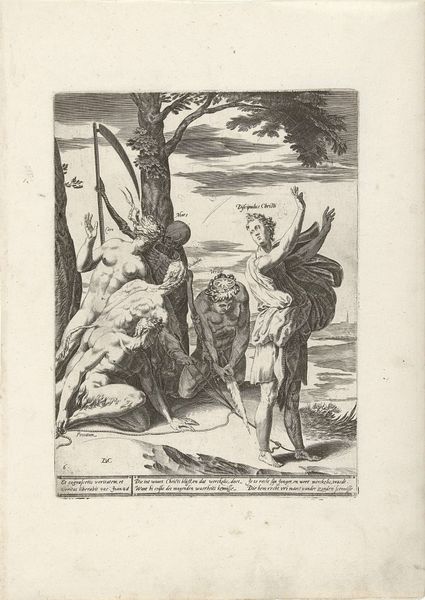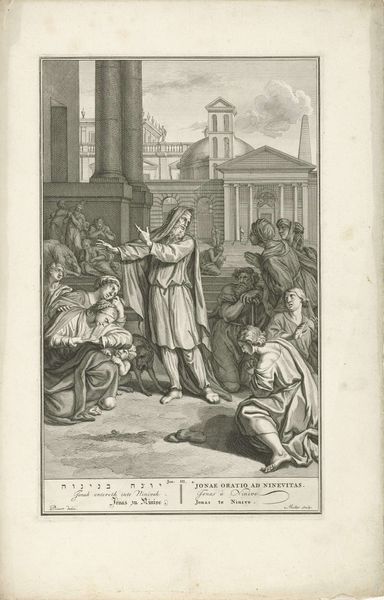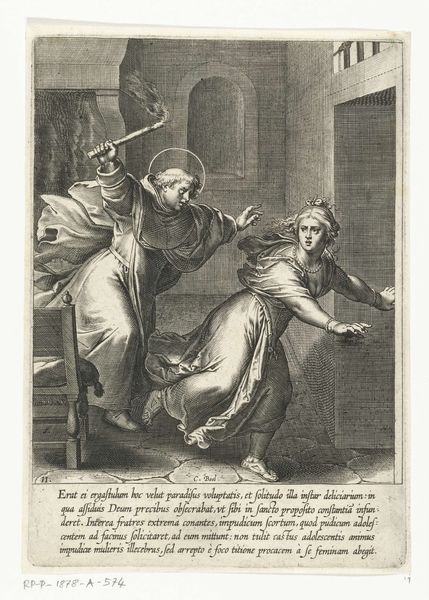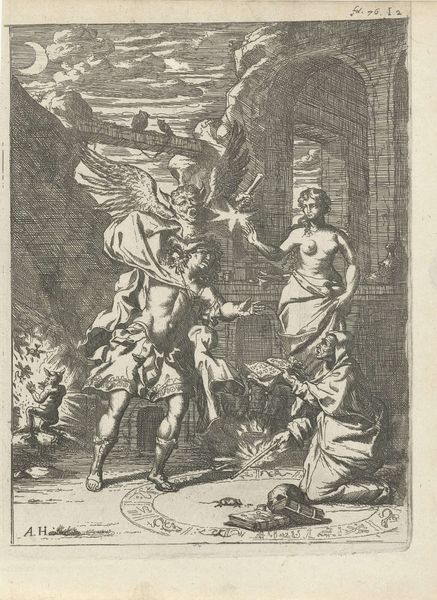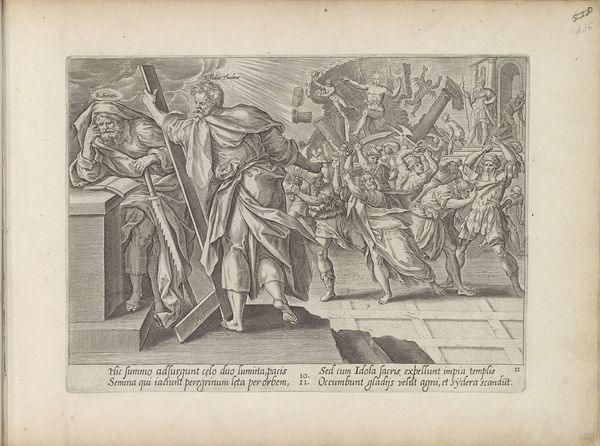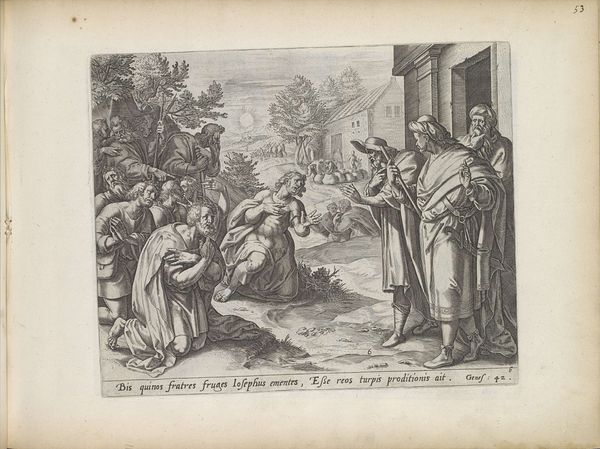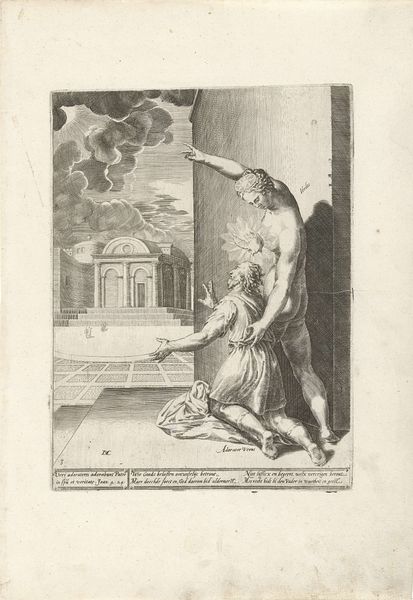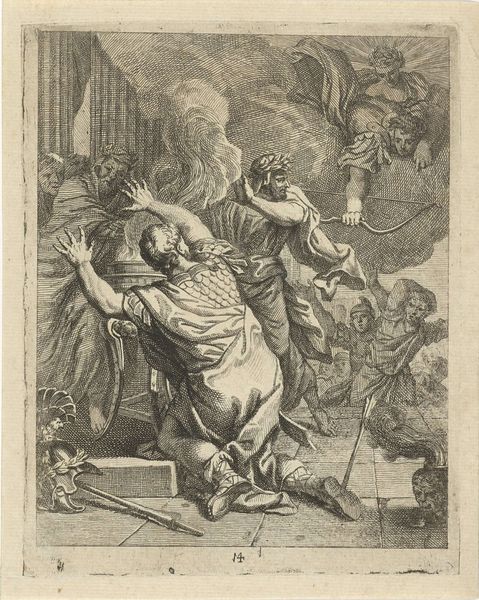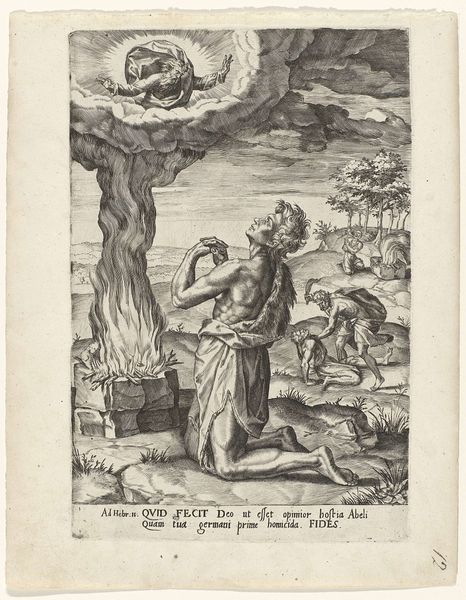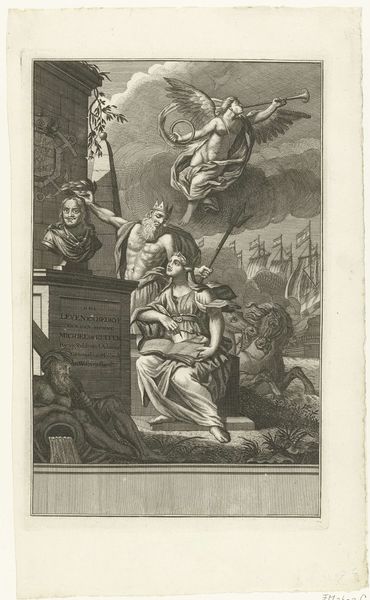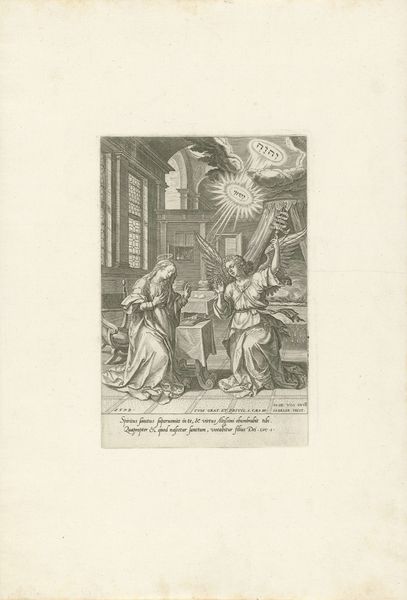
engraving
#
narrative-art
#
baroque
#
figuration
#
line
#
history-painting
#
engraving
Dimensions: height 175 mm, width 118 mm
Copyright: Rijks Museum: Open Domain
Curator: Here we have "Woman Turns to the Holy Trinity," a work dating from 1637 to 1697 by Richard Collin, housed here at the Rijksmuseum. Editor: My first thought is about the weight of those engraved lines. There's a definite tension created by the dark areas and dramatic lighting – almost theatrical, even. Curator: That dramatic quality aligns with the Baroque style, popular at the time. It was a period of religious and political upheaval in Europe, which fostered a desire for grandeur and emotional intensity in art. Looking at the composition, we can see a clear hierarchy. Editor: Absolutely. I am thinking of the means used to produce that: the controlled pressure applied to the plate, the biting of the acid to create the line… Curator: Let's talk about what we are seeing exactly: A woman kneels, hands raised towards the Holy Trinity, depicted in the upper left. A man stands beside her, sword at his side, hand raised in a gesture that seems to be either warning or encouragement. Editor: And what about the context of engraving? This piece functions as both art object and a commodity meant to be disseminated and consumed widely; it underscores that printing offered the potential for accessibility, making religious and historical narratives available beyond the elite. Curator: Exactly. Engravings like this one played a vital role in spreading religious and political ideas, as the work blends historical painting with religious themes. Editor: It feels significant that Collin chose engraving; that is, an accessible medium that lends itself well to propagating ideas quickly to the wider audience. It feels quite… modern. Curator: Yes, I find myself considering its role as a historical document; how does its wide circulation change what we know about the popular views? Editor: Indeed. And focusing on materiality, that repetitive action in engraving reflects so much in that era— from manual labor to mass communication. I suppose each viewing and distribution is itself another social performance, which makes that such a fascinating thing about Collin’s choices as a producer. Curator: A fascinating convergence, I agree.
Comments
No comments
Be the first to comment and join the conversation on the ultimate creative platform.

